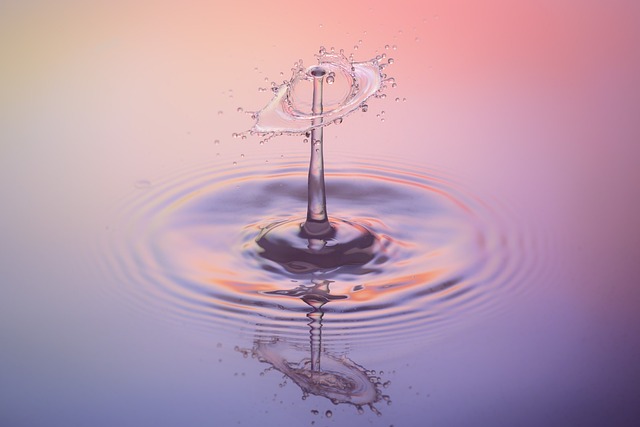by Laura K. Secor

Alan Watts describes the Tao with the adjective “fluid.” This word, fluid, can mean so many things. Fluid is a specific word for the way liquids flow, although they flow in a hundred different ways, each as characteristic as the gait of a person you love. Lava flows furiously and erratically, later eruptions pouring over the top of earlier – slowing and cooling – eruptions. Water can bubble and froth, can seep so slowly that movement does not register, can thrash down a waterfall, can rock gently in a lake. Water pounds relentlessly against the North Shore of Oahu in winter, hundred foot waves the holy grail of surfers everywhere. Water trickles into basements when spring rains encounter still-frozen yards. Water sits placid in a tub, until the toddler arrives. Water refuses to mix with oil, in a mobile sculpture such as The Wave, in which the two continuously negotiate for prominence, each always yielding at the same time as it encroaches elsewhere. Water dropped on paper creates an invitation for pigments, drawing the colors across the surface, up to the edge of the puddle. Water dissolves salt and a hundred other substances, and then it’s still water, but not really. It becomes dual-natured, it straddles two modes of being.
What else is literally fluid? Melted ice cream puddling on a hot sidewalk. Molasses slowly oozing into the mixing bowl. Coffee mixing with cream. Housepaint colors being mixed at Home Depot. Oil coming out of the ground in Texas via derrick. Is mud fluid? Is there a state we could call semi-fluid, or would we speak of a spectrum from silted water to hardened clay? Do other fluids live on such a spectrum? There are resins that are stiff at rest and become more fluid as they are stirred. That’s the human psyche right there, isn’t it? Perfumes are part liquid and part air. It seems there are as many exceptions as examples. Bronze is fluid when poured into a mold, willing to sacrifice its own theories of identity to adapt to its clay constraint. Some things are only fluid at high heat, such as bronze. Others are fluid at high pressure, like liquid hydrogen. So fluid is perhaps a state of mind, a way of being in the world.
Fluid as metaphor. The python draping itself across the jungle branch, catching rays through a break in the canopy. Ants pouring out of a hill that some budding scientist has poked with a stick. A murmuration of starlings flowing from one shape to the next, the whole more liquid than its parts. And what of your spirit? Does it take on the shape of the clay vessel, as does molten metal? Who shaped the vessel? Those of us whose religion is science scoff at the idea of God, but isn’t our answer – “genes and upbringing” – also a matter of belief? I’ve never seen any of my genes. I understand that each gene codes a protein, and I can see that demonstrated in a lab. I’m willing to rely on the “objective reality” of a protein coded by a gene. But how those proteins add up to my preference for black tea over green, I am taking that on faith. And, as far as I can tell, so is everyone else.
